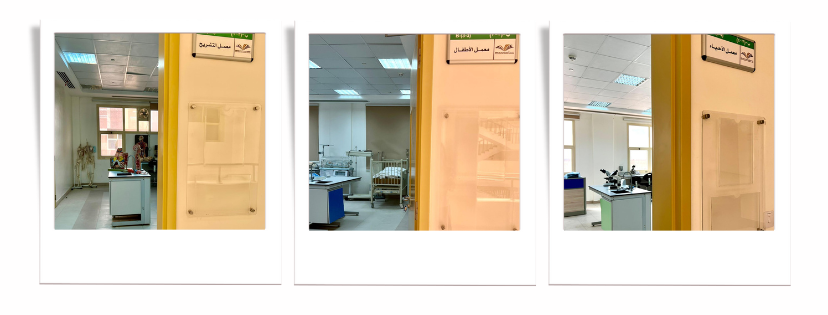

Due to the importance of the role of educational laboratories within the College of Applied Medical Sciences and to facilitate the applied educational process through the access of information to the student according to modern and developed means and technologies, one of the basics of the college when it was established was to be at the highest levels in terms of using and developing the latest devices and technologies, so the college was equipped with full capabilities laboratories that help the student increase her scientific achievement and acquire various scientific skills, as the college includes 6 laboratories.
First Adult Lab:
The raw materials are explained, vital signs are measured, methods of giving oral care, needles and nursing procedures, as this laboratory provides students with the necessary competencies to meet and solve the problems and needs of patients.
Second: Obstetrics and Gynecology Laboratory:
The skills necessary for the nursing care of women during pregnancy, childbirth, the post-reproductive period and during different stages of life are applied.
Third: Children's Lab:
It focuses on the practical aspect of child health nursing and newborn care by providing the necessary devices to provide this that simulate and resemble the hospital environment.
Fourth: Anatomy Laboratory:
Students are provided with complete knowledge about the anatomical and functional structure of all systems of the human body through models of the shapes of all organs of the human body showing each organ, its location and its relationship with the surrounding organs.
Fifth: Biology Lab:
In which the basic components of the immune system and its interactions are understood through the application of many practical techniques that link theories and practical application, in which blood groups are identified, samples are cultured and tests are conducted on them to determine the type of microbes and the appropriate antibiotic for their treatment.
Sixth: Chemistry Lab:
Chemical tests are applied using many techniques, and the results of these tests are interpreted to reach an appropriate diagnosis of diseases.
